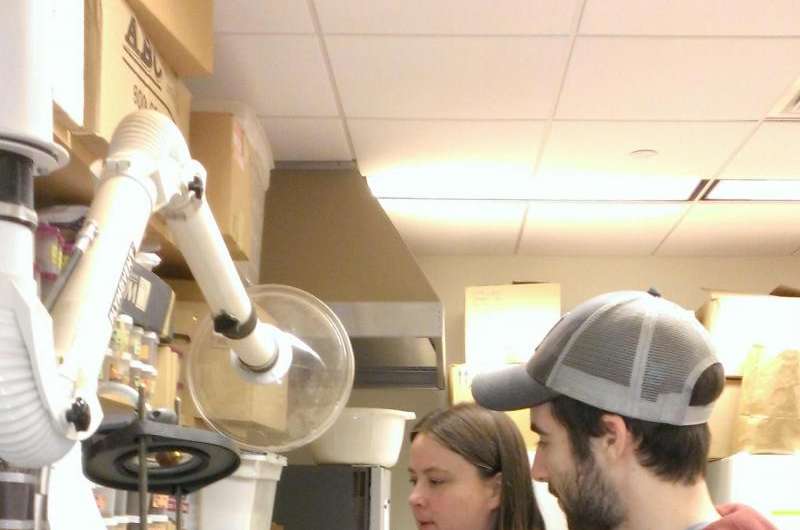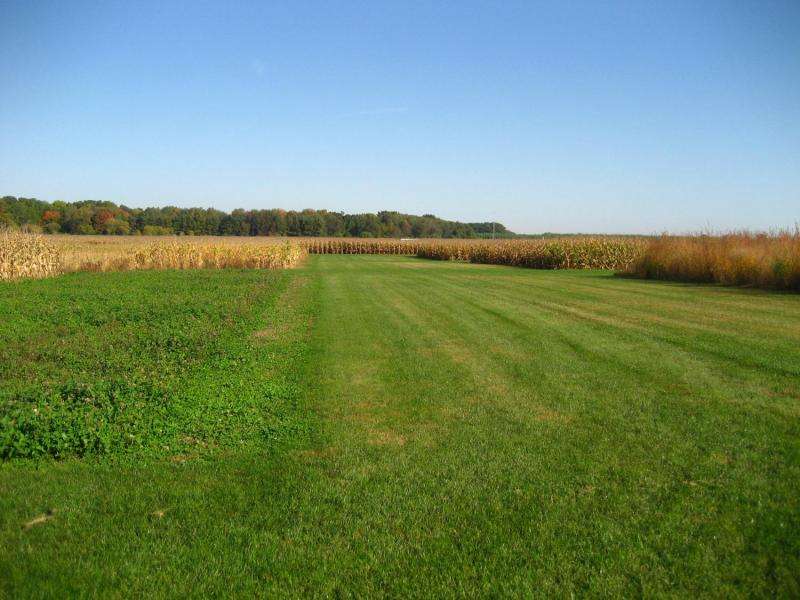Crop rotation boosts soil microbes, benefits plant growth

In the first study of its kind, new research from the University of New Hampshire shows that crop rotations, in isolation from other management factors, can increase the functions performed by soil microbial communities that benefit plant growth. The study was conducted by researchers with the New Hampshire Agricultural Experiment Station.
The study was conducted by Lisa Tiemann, former postdoctoral student, Stuart Grandy, who was Tiemann's postdoctoral advisor, and Marshall McDaniel, former postdoctoral student of Grandy, all of the UNH Department of Natural Resources and the Environment; and Emily Atkinson and Erika Marin-Spiotta of the Department of Geography at the University of Wisconsin-Madison. The researchers investigated the relationships among crop rotational diversity, soil structure, microbial community structure and activity, and soil organic matter chemistry.
Researchers tested five combinations of three crops - soy, wheat, and corn - and two cover crops - red clover and rye. They also planted a crop of only corn, while minimizing the effects of other management practices such as variable fertilizer and pesticide inputs that interfere with the crop rotation effect. Researchers observed a 33 percent increase in soil carbon by increasing rotational diversity. An indication of soil organic matter, the carbon content of soil is a major factor in its overall health and improves the physical properties of soil. Researchers also found that as crop diversity increased, so did total nitrogen concentrations, a sign of soil fertility.
"The data we present are the first to support the hypothesis that increasing rotational diversity fundamentally changes microbial community structure and activity, with positive effects on aggregate formation and soil organic matter accrual," Tiemann said. "These findings provide further support for the use of rotational diversity as a viable management practice for promoting agroecosystem sustainability."
A byproduct of increased pressure on soils due to agricultural intensification is a negative impact on microbial diversity and function. This is a problem worldwide and can lessen soil's ability to perform important ecosystem functions. Results may include threats to long-term food security, increases in greenhouse gas emission, and a reduction in water quality.

"Increasing plant biodiversity by crop rotation is a powerful tool for farmers to increase soil quality. Even increasing rotation by one or two crops, especially if cover crops are used, will improve soil physical, chemical, and biological processes that help regulate yields and environmental quality," Grandy said.
The research findings are presented in the journal Ecology Letters in the article "Crop rotational diversity enhances belowground communities and functions in an agroecosystem."
More information: www.ncbi.nlm.nih.gov/pubmed/26011743
Journal information: Ecology Letters
Provided by University of New Hampshire


















